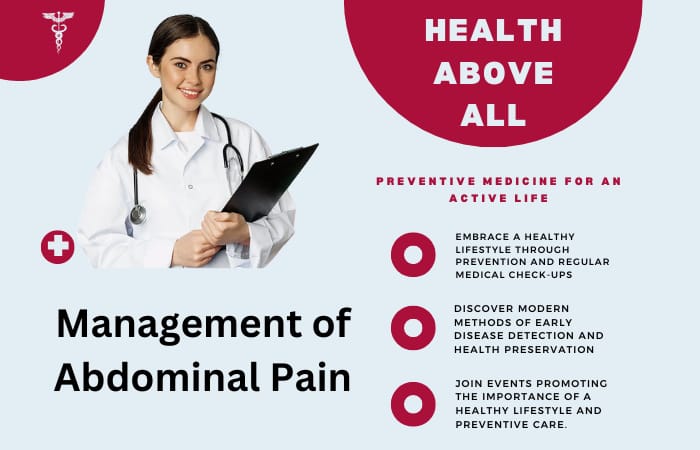Ribbon Cervical Cancer
Contents
Cervical Cancer Introduction
Cervical cancer is a sympathetic of cancer that initiates in the cervix—the inferior part of the uterus prominent into the vagina. The major cause is long-standing contamination by a few types of human papillomavirus. Although most HPV infections heal on their own, those that don’t may eventually trigger the development of abnormal cells that become cancerous over time. Screening tests, like the Pap smear and HPV testing, have massive potential for reducing the potential growth of full-blown cervical cancer by detection its precancerous changes previous than usual. HPV vaccination is alternative way of averting cervical cancer and is optional for girls and boys. This kind of cancer, once position as one of the top causes of cancer death among American women, has been seeing deteriorating death rates because of actual screening and vaccination efforts. Usually, early stages of cervical cancer do not bounce out too numerous symptoms, production timely screening all the more imperative for early discovery and effective treatment.
The Symbolism of the Teal and White Ribbon
Attention to the color teal and white ribbons serves as a sign of awareness toward the prevention and cure of cancer. The deep messages it conveys, in relation to cervical cancer awareness, come with its colors: teal and white. Teal: While most people think of ovarian cancer awareness, it’s a very visible color for cervical cancer, too. The color bears an altogether impression of healing and spirituality, reflecting the private journey of those affected by the disease and their hope for recovery and cure. Teal symbolizes the sense of community and togetherness needed in supporting women battling cervical cancer. White: White represents purity and the positiveness of hope, giving an individual hope and optimism about his or her future. It ascertains the possibility of a life free from the disease and banking on medical progress and preventive measures like vaccination and regular screening. These colors draw attention to the major issues associated with cervical cancer: raising awareness, prevention, support, and the continued search for effective treatments. A ribbon symbolizes the visibility for this cause and helps raise community support, fundraising, and education. It reminds one of the strength of those fighting the disease and the common commitment to reduce it through ongoing research and better policy health options.
Cervical Cancer Symptom
Cervical cancer frequently does not current symptoms in its early stages, which is why consistent screening is so critical. However, as the disease developments, symptoms may become more ostensible. Here are some mutual indications related with cervical cancer:
Irregular Vaginal Bleeding:
This is the most mutual symptom and can materialize between menstrual periods, afterward sexual intercourse, or after menopause. Unusual Vaginal Discharge: Augmented vaginal discharge that may be watery, foul-smelling, or varied with blood can be an emblem of cervical cancer.
Pelvic Pain:
Pain throughout intercourse or at additional times can be a symptom of substantial cervical cancer. This pain might not be connected with the menstrual cycle.
Pain During Intercourse:
Discomfort or pain throughout sexual intercourse can be a primary sign of cervical cancer.
Leg Pain or Swelling:
As the cancer developments, it might reporters on nerves or other structures in the pelvic area, leading to pain or inflammation in the legs.
Urinary Problems:
Advanced cervical cancer can interrupt bladder function, important to urinary difficulties such as frequency, pain during urination, or difficulty urinating.
It’s significant to note that these symptoms can also be instigated by conditions other than cervical cancer. Though, if any of these symptoms are determined, it is critical to refer a healthcare benefactor for a thorough assessment and suitable testing, including a Pap slight or HPV test, to rule out or identify cervical cancer.
Cervical Cancer Signs
Medically, a “sign” refers to any objective indication or manifestation of a disease or some other health condition, which can be observed and measured by a person other than the patient—usually the healthcare professional. It differs from symptoms, which are subjective experiences of the patient alone, like pains or fatigue. They include rash, swelling, fever, and abnormal blood test results. These signs are very important for diagnosis because they provide concrete evidence that can be checked by physical examination, laboratory tests, or imaging studies. Signs concretize the diagnosis, help establish the severity of disease, and allow monitoring of the results of treatment. Their objectivity makes them an integral part of the medical evaluation and decision-making processes.
Cervical Cancer Screening
Screening is, therefore, a test for disease in an individual who does not manifest the symptoms. This essentially is an intensely important proactive health measure needed for early detection of varied conditions to ensure interventions and treatments may be put into place to prevent further progression of the disease or even cure it before the apparent signs and symptoms of the disease manifest. However, screening programs apply to a wide range of diseases meeting certain criteria, like significantly affecting the quality of life; more treatable if caught early; and common enough to justify the cost and effort needed for screening. Some common examples of screening include:
Breast Cancer Screening: Many mammograms are routinely done in women in the age categories to screen breast cancer at the asymptomatic stage of the disease.
Cervical Cancer Screening: Cytologic inspections and human papillomavirus testing recognize the precancerous circumstances within the cervix, and dealing could avert development to cancer.
Cholesterol Screening: Blood tests to regulate cholesterol levels recognize those at danger of heart and blood vessel sicknesses.
Screening for Diabetes: Blood sugar tests are conducted to find cases of diabetes early enough where, with lifestyle changes and treatment, complications can best be prevented.
Effectiveness of screening also depends upon the prevalence of the disease to be tested for, quality of applied screening test, and facilities existing for further diagnosis and proper treatment. Basically, good screening programs also include health education, so people would take advantage of the screening and factors presenting barriers to access are removed, and indeed, screening brings about health improvement.
Prevention and Early Detection
All the cardinal approaches in public health, in essence, reduce to preclusions and early detections. Prevention refers to measures that actually stop a disease from occurring, while early detection means the identification of a condition as early as possible to maximize the effectiveness of treatment.
Prevention Strategies
Prevention can be primary, secondary, or tertiary:
Primary prevention ensures that risk factors are minimized from the start. It consists of vaccination, behavioral change to a healthy lifestyle, including good nutrition and regular exercise, and a reduced exposure to risk environmental factors such as smoking and air pollution.
Secondary Prevention identifies and treats precursors of a disease or the disease itself in its early stages. This has often been realized through well-designed screening programs for the early detection of diseases like cancer or diabetes before the first appearance of symptoms.
Tertiary Prevention manages diagnosed disease through slowing or halting its progress and reduces complications. In so many cases, effective prevention strategies involve public education, policy changes, and community support to motivate healthy behaviors and environments.
Early Detection
Early detection is important because the outcome of many diseases, such as cancer and heart disease, is significantly better if identified and treated early. It is usually based on screening tools and tests that might give evidence of illnesses even before symptoms appear. For example:
Cancer Screening: It includes consistent screening tests, like mammograms intended for breast cancer or colonoscopies designed for colorectal cancer. These tests assistance notice cancer at primary stages, when it is most remediable.
Heart Disease and blood tests screenings recognize danger influences early in the procedure, allowing involvements to avert the development to heart disease.
Implementing Prevention and Early Detection
Implementing Anticipation and Primary Detection Implementation of effective prevention and early detection strategies involves: Education: Educating the public on risk factors and signs of diseases. Accessibility: Ensuring accessibility and affordability of screening tests and preventive measures to all sections of the population. Research: This will allow ongoing research and practice update in the light of new emerging scientific evidence. Collaboration: To work collaboratively crossways the health, government and public sectors in provided that environments that sustenance healthy choices and access to screening. Not only do deterrence and early discovery save lives, but it also decreases health care prices and recovers the excellence of life. They exuberant among the most cost-effective health policies, offering countless value to the separate and society.
Current Challenges
To understand the existing challenges to prevention and early detection, one needs to get a clear insight into the barriers experienced at various levels—healthcare, policy, and community engagement. Some of the major challenges include:
Access to Health Care: A person’s geographic area, residence in a rural or underserved urban area, would limit access to health care services to a large extent. Thus, it may create inequalities in the availability of screening and preventive services and subsequently affect early detection rates and health outcomes.
Health Literacy: A lack of health literacy within the population can certainly undermine effective prevention and early detection. Very few will have any idea about the preventive measures or the symptoms that should alert them to seek advice from a doctor. Health education, particularly on symptoms and benefits of early detection, needs emphasis.
Cost and Insurance Coverage: Despite having access to healthcare facilities, many individuals are deterred from attending preventive screenings and treatment because of their cost, especially in countries that do not have universal healthcare coverage. Not all preventive services are covered under insurance companies, or high co-payments are required, which could minimize one’s urge to participate regularly in health screening.
Cultural and Social Barriers: Cultural beliefs and social norms may be the reason for one’s attitude towards any medical intervention. For example, stigma or false beliefs against some diseases, such as cancer or mental health issues, are a barrier to early diagnosis and treatment. Compliance and Follow-Up: One of the challenges is getting people to adhere to recommended screening schedules and follow-up treatments; this can be based on fear, misunderstanding, or even non-compliance resulting from logistical issues such as time off from work and transportation.
Resource Allocation: This is one of the major challenges most healthcare systems face, trying to allocate appropriate resources between cure and care. Normally, prevention does not get the same emphasis and funding as acute care, even though it might save more lives and be less costly on aggregate healthcare in the long run. One of the technological and diagnostic advancements is that technology in medicine is rapidly advancing, but there is slow integration into mainstream healthcare practice for new diagnostic tools and treatments. The other concern is the challenge of making sure that these are quite availed equitably across different populations.
Data Privacy and Security: The cumulative usage of electronic health archives and digital health technologies donates to mounting concerns related to data discretion and security. Upholding the discretion of health evidence while sharing it for medical determinations is a slight complementary act.
Global health challenges: On the global level, dissimilar regions raise specific apprehensions for deterrence and early detection, counting outbreaks of infectious sicknesses, lack of substructure, and political instability, which may delay the healthcare facilities or delay the implementation of effective health policies. Such challenges require well-coordinated efforts on the part of governments, health care providers, communities, and individuals to gain improved access, heightened health literacy, changed policies, and greater acceptance and understanding of preventive care from a cultural point of view.
Global Strategies for Control
Control of diseases all over the world, especially in the domain of prevention and control, needs strategies which are applicable in various geographic and socio-economic conditions. Key elements to formulate a global strategy on the control of diseases are enlisted below:
1. International collaboration and coordination As far as health matters across the world are concerned, international organizations are important in the same coordination at the level of the World Health Organization. Through such organizations, the collaborating efforts among countries can be brought together, their health policies standardized, and a platform whereby data, as well as good practice, can be shared. This would go a long way into addressing global health threats, including pandemics, through setting appropriate standards for prevention and disease control.
2. Health Systems Strengthening An effective health system is the backbone of disease control, therefore many global strategies concentrate on strengthening health infrastructures in low- and middle-income countries through health workers training, healthcare facilities improvement, and resilient systems that would survive sudden spikes in demand as health crises times.
3. Universal Health Coverage It ensures universal health coverage—achieving necessary health services to all, whether poor or rich, without experiencing financial hardship. This thereby provides access to preventive services, reducing the worldwide burden of disease.
4. Vaccination and Immunization Programs The administration of vaccines is considered to be among the most cost-effective of health interventions. Global vaccination drives, like the one aimed at eliminating polio or containing measles, assume critical importance in the fight against diseases. he strategies put in place entail securing funds for vaccine development, improvement of distribution networks, and conducting mass vaccination campaigns.
5 Surveillance and Monitoring Efficient surveillance forms the backbone of any early warning system for outbreaks. Global strategies in this include the establishment and maintenance of proficient disease surveillance systems that allow for timely detection and monitoring of risks to health. This also involves the use of technology in monitoring trends of diseases for the purpose of predicting outbreaks.
6. Research and Development Research and development form the backbone of understanding diseases and new treatments and technologies. Across borders, this would entail funding of research, facilitating collaborative international research efforts, and ensuring that findings are openly shared for the benefit of all countries.
7. Health Promotion and Public Education Control of diseases to a great extent is dependent on the level of public education with regards to prevention, symptoms, and warning signs when they should seek help. Global strategies involve awareness campaigns to be implemented where the health literacy is low so that people may actively participate in healthy practices.
8. Policy and Legislation Effective policies and legislation are necessary for reinforcing and implementing health standards and practices. This includes control over the use of tobacco, vaccination laws, enforcement of public sanitation, and reduction in environmental risks.
9. Cultural Sensitivity and Community Engagement Success in health initiatives depends greatly on the understanding and integration of cultural contexts. This should engage a local community in the planning and implementation process, so approaches can be attuned to local belief systems and practices, raising acceptance and participation of the community at large.
10. The SDGs It is in this backdrop that the SDGs by the United Nations offer a platform that addresses global challenges to health in the context of ensuring improved wellbeing for all. Many of the goals directly relate to, or have an impact on, health: reducing child mortality, improving maternal health, and combating diseases are some of the coverage areas. These are not easy to implement and do call for enormous efforts at the levels of governments, non-governmental organizations, the private sector, and the communities. This cumulates to make a big difference in health outcomes globally and in controlling diseases.


